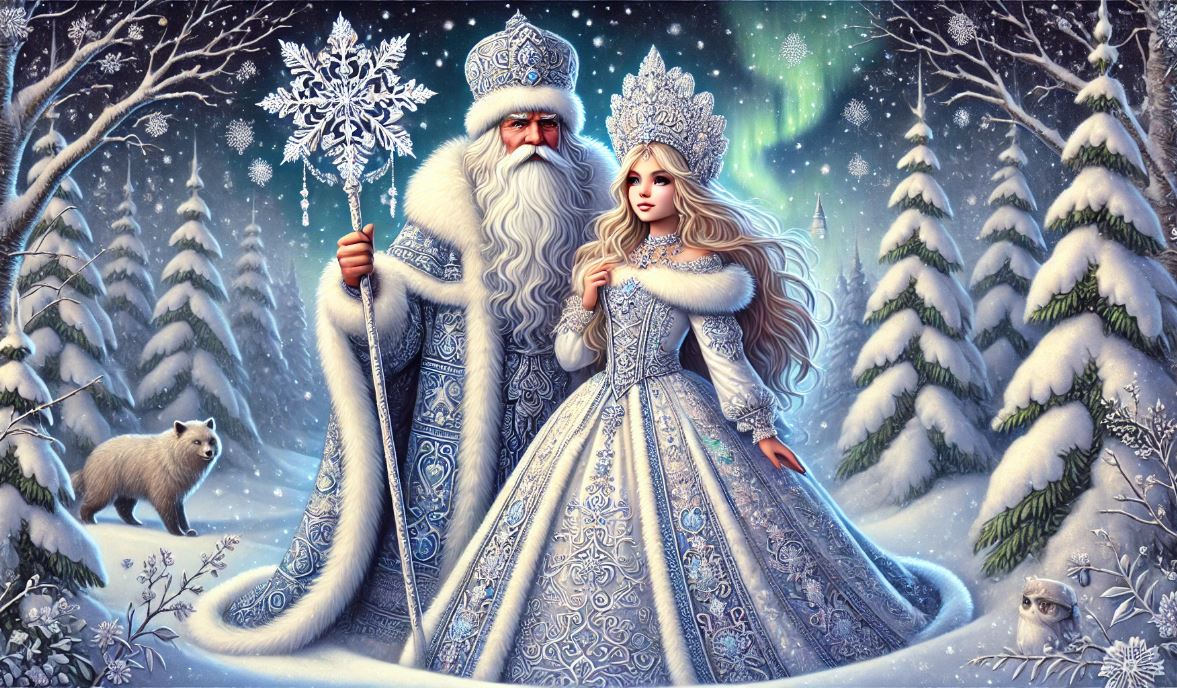The vast, frozen expanse of Siberia is home to numerous indigenous groups, including the Nenets, Evenki, and Sakha (Yakuts). These communities have long celebrated the winter period with unique rituals and customs tied to their environment and spiritual beliefs. Over centuries, their traditions have evolved, influenced by Russian Orthodox Christianity and modern practices. While the Western concept of Christmas is not universally celebrated, Siberia’s indigenous peoples mark this season with fascinating rituals that blend old and new.The vast, frozen expanse of Siberia is home to numerous indigenous groups, including the Nenets, Evenki, and Sakha (Yakuts). These communities have long celebrated the winter period with unique rituals and customs tied to their environment and spiritual beliefs. Over centuries, their traditions have evolved, influenced by Russian Orthodox Christianity and modern practices. While the Western concept of Christmas is not universally celebrated, Siberia’s indigenous peoples mark this season with fascinating rituals that blend old and new.
Honoring the Winter Solstice
For many Siberian indigenous groups, the winter solstice is a pivotal time. The solstice signifies the rebirth of light after the darkest days, making it a spiritually charged moment for rituals of renewal, protection, and gratitude.
Among the Nenets, Evenki, and Khanty, shamanic ceremonies are central to this period. Shamans led rituals involving drumming, chanting, and offerings to nature spirits and ancestors. Fire plays a significant role in these ceremonies, symbolizing purification and a connection to higher powers. Community members often offer food, reindeer antlers, or fish to the fire, seeking blessings for the harsh months ahead.
The Influence of Russian Orthodoxy
With the arrival of Russian Orthodox missionaries in Siberia centuries ago, many indigenous communities adopted Christian practices alongside their own. Russian Orthodox Christmas, celebrated on January 7, has become an important date in many indigenous villages.
During Christmas, families may fast before gathering for a festive meal. Traditional dishes, often made from reindeer meat or fish, are shared, reflecting the subsistence lifestyle of these Arctic communities. Some households also observe Svyatki, or the "Holy Nights," spanning Christmas to Epiphany (January 19). These nights are often marked by storytelling, fortune-telling games, and community gatherings.
The Secular New Year and Ded Moroz
For many in Siberia, the secular New Year (January 1) holds greater significance than Christmas. Celebrations often feature Ded Moroz (Father Frost) and Snegurochka (Snow Maiden), characters rooted in Slavic folklore. Indigenous communities have embraced these figures, integrating them into local festivities.
New Year’s Eve is typically a time for large feasts, music, and storytelling. Reindeer herders, like the Nenets, may gather in yurts or chum (portable tents), sharing traditional foods and warmth amid the snow-covered tundra.
Unique Indigenous Practices
Each indigenous group brings its own cultural flavor to the season.
The Sakha (Yakut) Yhyakh: While Yhyakh is primarily a summer festival, winter gatherings also honor deities and nature. These ceremonies are more subdued but carry the same themes of renewal and connection to the earth.
Nenets Fire Rituals: For the Nenets, fire remains a central symbol of spiritual protection. Rituals often involve creating sacred fires, believed to ward off evil spirits during the long Arctic nights.
Evenki Ceremonial Feasts: Evenki traditions include storytelling around communal fires, where elders pass down myths of creation and survival.
A Modern Revival of Heritage
In recent years, there has been a resurgence of interest in indigenous traditions across Siberia. Efforts to reclaim and celebrate ancestral practices are growing, often alongside Christian and secular celebrations. This revival reflects a desire to honor the resilience of these communities and their deep ties to the land.
A Season of Resilience and Community
For Siberia’s indigenous peoples, winter is not merely a season of survival—it is a time to reaffirm bonds with family, community, and nature. Whether through shamanic ceremonies, Christmas feasts, or New Year gatherings, the spirit of celebration endures in the icy heart of the Arctic. Their winter traditions remind us of humanity’s enduring connection to the rhythms of the earth and the importance of finding warmth and light during the darkest days of the year.
An article written by Fanney Sigrún Ingvadóttir
Related news:
Jólasveinar - The thirteen Icelandic Yule lads (Santa Clauses)
Jólasveinar - the Icelandic Yule lads (Santa clauses)!
Arctic Christmas, Christianity and beliefs
Quick-facts:
The thirteen Icelandic Yule Lads
The tags below provide an opportunity to view previously posted related news within the selected category

